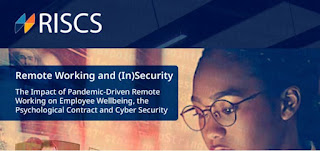Real World Crypto Review: Mikaela Brough & Wrenna Robson
From March 27-29, some of the CDT’s researchers had the opportunity to attend Real World Crypto (RWC) 2023. RWC moves venue every year, last year being in Amsterdam and next year in Toronto. This year, it was in Tokyo. RWC is focused on bringing together cryptography researchers from academia with developers who implement cryptography in their systems, thus creating open and interesting dialogue between these two communities. Notably, RWC does not publish proceedings from presentations, and talks are solely selected based on how much interest they would be to the intended audience. The talk selection process is not intended to evaluate the academic quality of a piece of research, but rather the potential impact that it would have on society or technology. Therefore, the collection of contributed and invited talks were particularly engaging, with the findings of the different studies having immense current and future impact in the real world.
Many of us in the CDT had an interest in attending RWC since we have research interests in cryptography. Our specific research areas vary though – with different talks appealing to different people. RWC is ideal to visit as a group with varied interests, since the talks cover a large range of areas. Some examples of themed sessions (each with about 3 talks) include: post-quantum cryptography, network security, ‘cryptography for people’. Side channels/backdoors, secure messaging, fully-homomorphic encryption, privacy, threshold cryptography, etc. The conference’s focus on the practical aspects of cryptography was another appealing factor – for those of us whose research explicitly focuses on applied cryptography, it was very useful to be able to speak to researchers and designers who are actively grappling with the social and technical challenges of implementing systems. Meeting new people, having engaging conversations, and developing our professional networks in our respective fields was exciting and useful for our continued development as researchers. Such connections are only possible at the kind of in-person event that RWC represents: the pandemic has starkly illustrated that.
The days at RWC comprised of a combination of contributed talks, invited talks, coffee breaks, snacks, and lunches. In addition, the first day featured an evening reception with a traditional Japanese magic show. Since the talk sessions were themed, not everyone went to every talk, thus allowing for networking in the communal areas – indeed, this “corridor track” was for some people the most useful part of the whole experience. Some highlights of RWC were the brilliant talks, delicious Bento box lunches, fun reception, and excellent opportunities for connecting with other researchers. In addition, it was useful to have such a mix of people from both academia and private industry, since both groups bring such essential but diverse perspectives to the core issues in applied cryptography today. It’s the connections we forge at events like this that will be the foundation of our future careers after the conclusion of the PhD, whether in industry or academia, and understanding the similarities and differences between commercial and academic research is a key part of that.
Beyond RWC itself, there were also more specialist conferences, seminars and meetings taking place in the context of the larger event. These included the FHE.org annual conference on Fully Homomorphic Encryption, and the High Assurance Cryptography Seminar, an innovative and intense event focusing collaboration on the field of computer-aided cryptographic verification and validation. For those who attended these events, they were if anything even more useful than RWC itself.
Outside of work, Tokyo was an incredible place, and it really was a privilege to get to visit – for some of us, it wasn’t something we’d ever thought would be possible in our lives. We enjoyed being able to try many of Japan’s famous delicacies and take part in some of Tokyo’s unique culture and see some of its wildly different neighborhoods. We did some sightseeing together as a group but also explored different areas of Tokyo that appealed to us individually, such as the famous Akihabara—centre of geek culture in Japan. After our responsibilities were concluded, some of us stayed around Tokyo; others took the Shinkansen ‘bullet train’ to Kyoto for a few days before returning to London (and there are rumours that some people stayed up all night dancing in Tokyo’s clubbing scene and needed a day relaxing in the spa town of Hakone to recover…). One of the greatest parts of academic life is the chance to travel for our work, and that is all the truer when seeing an amazing city like Tokyo. In many ways, it was very different to anything we were used to, and in other ways, it was comfortingly familiar – even thousands of miles away, things remind you of home. It’s important to remember, as scholars of cyber security for the everyday, that what is “everyday” is a culturally contingent concept: it is by getting out of our books and seeing the world as it is that we gain the kind of insights we need to build our research to new heights.


Comments
Post a Comment